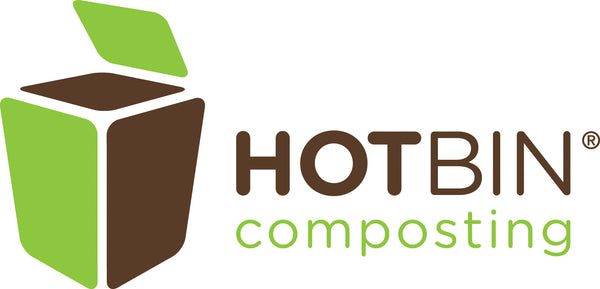With HOTBIN, you do not need to turn or tumble to compost. The main reason for turning compost is usually to provide aeration into the waste, and that is not needed with HOTBIN.
That said, let’s start by defining what we mean by turning compost inside a HOTBIN… and why. We are just talking about using a garden fork to mix 2-4 in. of new waste with existing compost. This simple act will get the existing bacteria mixed-in with the new waste to break it down faster. This will also aerate or provide oxygen to the bacteria in the heap and prevent the waste from becoming anaerobic and smelly.
In terms of new air being added, turning has a minor and temporary benefit as the oxygen introduced is small and will be used by bacteria within minutes or hours. Oxygen only diffuses quickly through the waste to the bacteria via the pore spaces between the waste (technically known as the ‘Free Air Space’ - FAS).
However, if you add the right materials at the start, you do not need to turn the heap to aerate it.
HOTBIN and Oxygen
The HOTBIN process uses bulking agent to create and maintain pores (FAS), therefore, no turning is needed. The taller the compost pile the heavier it will be. Tall heaps compress the compost below and this reduces air spaces and pores. Keeping the heap below 3 ft. avoids excess compression. Our recommendation of emptying the HOTBIN every six months, also helps.
Tumblers and Oxygen
We could not speak about turning without speaking about tumblers. Tumblers can increase compression and reduce aeration - i.e., the opposite effect of its purpose. The weight of material circulating can create a ‘solid’ compressed slug or ball of waste that rises to top of turn then falls to the base 'slamming' the waste together and compressing it. The wetter the waste, the more pronounced the problem.
How does turning affect the water distribution in the heap?
Although bacteria need water to develop, too much water will reduce the free air space (FAS) and restricts the oxygen flow. In a hot compost system such as the HOTBIN, a significant quantity of moisture is converted to water vapour, which leaves the top of the bin as steam. The amount of water removed depends on the temperature and the free air spaces (FAS), but it does dry away excess water. There is no advantage turning a hot heap to rebalance water – the system does it for you!
How does turning affect the food available to bacteria?
Due to having insulated walls, HOTBIN’s active zone extends to the outer edges. All the waste is composted so there is no need to turn to move the waste into the center. Different from hot composting, in cold composting the outer layer of the heap decays slower than the central & middle areas. Due to the above, there is some benefit of turning the heap to move the outer layers into the center where the bacteria are more active.
How does turning affect the temperature of the heap?
When you turn a cold heap, vast amounts of heat are lost as the hot middle is exposed to the cold ambient air. When new waste is added to the heap, the bacteria create some heat as they have new oxygen. However, the overall the heat benefit is negative. Turning is often used by industrial sites just to reduce temperature (i.e., from 150°F back down to 130°F).
In contrast, the HOTBIN draws cold air in through the base inlet, this passes through the waste using the free airspace created by mulch/wood chip. The heat produced by the bacteria breaking down the waste, is then contained within the bin due to the thick insulating walls. The higher the temperature (up to 160° F) the faster bacteria will compost. This means you can have compost within 30-90 days in a HOTBIN.
Can turning alone fix an anaerobic smelly bin?
No. An anaerobic bin arises when no new oxygen can enter because the soft waste has compressed, and the water has filled all free air spaces (FAS). Turning alone will not fix the problem.
